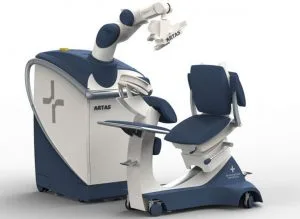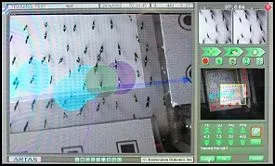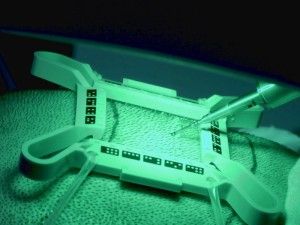The hair transplantation field is continuously evolving with various new technologies, techniques and procedures that can be applied for hair transplants. In this interesting discussion, we have compared our Dr Huber and Dr Jones’ FUE technique with the ARTAS FUE robotic hair transplantation technique.
ARTAS vs. THTS’s FUE Technique – An interesting comparison

ARTAS System History
Restoration Robotics is a company founded by Dr. Frederick H. Moll, who developed the ARTAS System. This completely automated machine is the first robot designed to carry out the scoring aspect of the FUE hair transplant procedure.
ARTAS System: The Mechanism Explained
The robotic arm of ARTAS consists of cameras, colour identification sensors and 3-D imaging software that guide the robotic arm in selecting the follicles that need to be scored. ARTAS consists of the following components that have been designed to carry out the FUE process:
- A needle punch mechanism
- Disposable dermal punches
- Disposable cartridges
- A video imaging system
- A user interface
The Transplant Procedure

Pros and Cons of ARTAS
Pros of ARTAS
- The speed of the extraction process is significantly improved with the procedure over inexperienced and untrained surgeons. This allows for providers who do not have a lot of experience doing the FUE procedure manually to offer the service.

- ARTAS tries to replicate the touch of a human expert to the procedure.
- ARTAS charges for all the grafts, including those used and destroyed during the procedure, whereas Dr Huber and Dr Jones only plant and charges for viable grafts.
- Dr Huber and Dr Jones extract more grafts per hour, compared to the robot (= the transection rate is higher).
- The robot has limitations in the perfect selection of grafts as compared to Dr Huber or Dr Jones, who can pick and choose varying size grafts, depending on the patient’s needs.
- The ARTAS system requires the patient to shave his or her head prior to the procedure, while Dr Huber and Dr Jones can perform the FUE Procedure with partial and sometimes no shaving of the head.
At this point, both Dr Huber and Dr Jones feel the only advantage of the ARTAS Robot for an experienced FUE surgeon is a marketing one. It is slower, with higher transection rate, more expensive and less choice when choosing the areas to extract grafts from for the patient.
** Blog post originally posted August 23, 2019 – Updated June 9, 2020.





